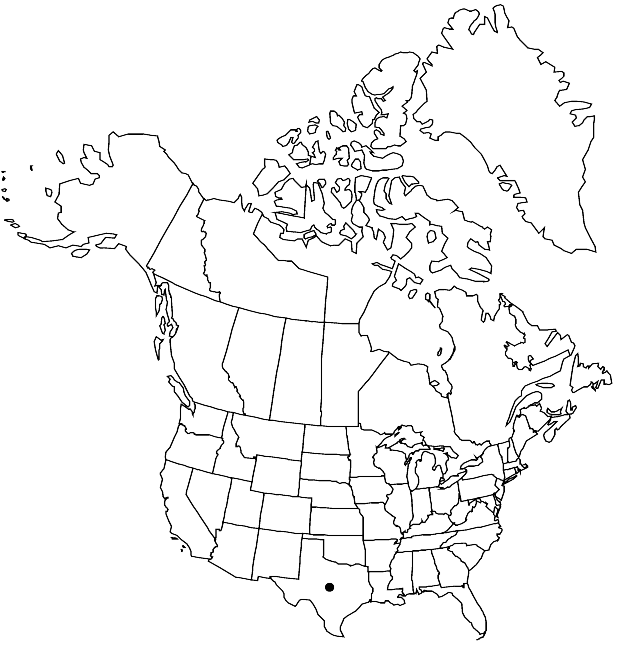Physaria lindheimeri
Novon 12: 325. 2002.
Annuals or biennials; with a fine taproot; densely pubescent, trichomes (sessile or short-stalked), 4–7-rayed, rays usually furcate at base, sometimes bifurcate, (rough-tuberculate throughout). Stems several from base, erect or outer decumbent, (often several-branched, branches slender and flexuous), to 8 dm. Basal leaves: blade pinnatisect to repand, 3–9(–14) cm, margins entire. Cauline leaves (sometimes secund, proximal usually petiolate, distal sessile); blade elliptic, 1–6 cm, (distal with cuneate base), margins entire or deeply dentate. Racemes dense. Fruiting pedicels (horizontal or recurved and ascending at tip, sometimes loosely sigmoid), (5–)10–20 mm. Flowers: sepals elliptic to oblong, 3–5.5 mm, (median pair slightly thickened apically, cucullate); petals (sometimes drying slightly purplish), suborbicular or broadly ovate, 4.5–7(–9) mm, (narrowing gradually to short claw). Fruits globose or broadly ellipsoid, not or slightly inflated, (4–)5–8 mm, (smooth); valves (not retaining seeds after dehiscence), glabrous; replum as wide as or wider than fruit; ovules (8–)12–16(–20) per ovary; style (1.5–)2–3(–4) mm. Seeds flattened. 2n = 12.
Phenology: Flowering Dec–Apr.
Habitat: Heavy, black, claylike soils, or lighter, sandy soils, thickets, field-margins, roadsides, coastal prairies
Elevation: 20-800 m
Distribution

Tex., Mexico (Tamaulipas).
Discussion
Selected References
None.